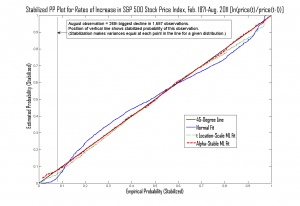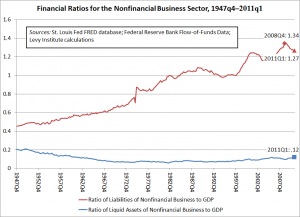On Sectoral Balances, Power Imbalances, and More
[The following is the text of Senior Scholar Randall Wray’s presentation, delivered October 28, 2011, at the annual conference of the Research Network Macroeconomics and Macroeconomic Policies (IMK) in Berlin. This year’s conference was titled “From crisis to growth? The challenge of imbalances, debt, and limited resources.”]
It is commonplace to link Neoclassical economics to 18th or 19th century physics with its notion of equilibrium, of a pendulum once disturbed eventually coming to rest. Likewise, an economy subjected to an exogenous shock seeks equilibrium through the stabilizing market forces unleashed by the invisible hand. The metaphor can be applied to virtually every sphere of economics: from micro markets for fish that are traded spot, to macro markets for something called labor, and on to complex financial markets in synthetic CDOs. Guided by invisible hands, supplies balance demands and all markets clear.
Armed with metaphors from physics, the economist has no problem at all extending the analysis across international borders to traded commodities, to what are euphemistically called capital flows, and on to currencies, themselves. Certainly there is a price, somewhere, someplace, somehow, that will balance supply and demand—for the stuff we can drop on our feet to break a toe, and on to the mental and physical efforts of our brethren, and finally to notional derivatives that occupy neither time nor space. It all must balance, and if it does not, invisible but powerful forces will accomplish the inevitable.
The orthodox economist is sure that if we just get the government out of the way, the market will do the dirty work. Balance. The market will restore it and all will be right with the world. The heterodox economist? Well, she is less sure. The market might not work. It needs a bit of coaxing. Imbalances can persist. Market forces can be rather impotent. The visible hand of government can hasten the move to balance. continue reading…






 ShareThis
ShareThis